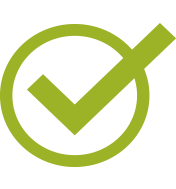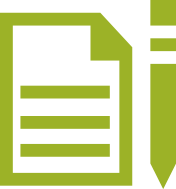PHOT 0092. Alternative Processes
Units: 3
Prerequisite: Completion of PHOT 60A with grade of "C" or better
Hours: 90 (36 lecture, 54 laboratory)
Creative expression through alternative photographic processes, many of which were first developed in the 19th century and are known for producing expressive prints with a unique look. Merging of digital technology and non-traditional printing materials explored. Processes may include: cyanotype, salt printing, kallitype, anthotype, tintype, lumen, hand-coated silver emulsion, and inkjet transfers. (CSU)
PHOT 0092 - Alternative Processes
https://catalog.sierracollege.edu/course-outlines/phot-0092/
Catalog Description Prerequisite: Completion of PHOT 60A with grade of "C" or better Hours: 90 (36 lecture, 54 laboratory) Description: Creative expression through alternative photographic processes, many of which were first developed in the 19th century and are known for producing expressive prints with a unique look. Merging of digital technology and non-traditional printing materials explored. Processes may include: cyanotype, salt printing, kallitype, anthotype, tintype, lumen, hand-coated silver emulsion, and inkjet transfers. (CSU) Course Student Learning Outcomes CSLO #1: Create a portfolio of photographs utilizing a variety of alternative photographic processes. CSLO #2: Prepare chemistry, negatives and substrates used in alternative photographic processes. CSLO #3: Critique final images based on creativity, aesthetics and the relationship between the technique and the subject matter. Effective Term Fall 2025 Course Type Credit - Degree-applicable Contact Hours 90 Outside of Class Hours 72 Total Student Learning Hours 162 Course Objectives Lecture Objectives: 1. Describe the progression of historical processes; 2. Discuss the relationship between technique and content both historically and in contemporary photography; 3. Identify the differences between silver and non-silver processes; 4. Compare inkjet transfer techniques; 5. Select appropriate toning technique to the process being used and visual impact desired; 6. Outline the steps in producing an enlarged negative; 7. Generate a list of materials needed for the process being explored; 8. Analyze and correct problems with the production cycle to improve final output and efficiency. Laboratory Objectives: 1. Produce silver-halide images in a non-traditional manner; 2. Assess the visual impact of prints produced from non-silver processes; 3. Create final images by combining digital and traditional techniques utilizing transfer methods; 4. Improve the visual impact of an image by toning, distressing or altering its color; 5. Produce enlarged negatives in preparation for contact printing; 6. Demonstrate safe handling of materials and safety precautions when working on projects; and 7. Create final portfolio of alternative process images. General Education Information Approved College Associate Degree GE Applicability CSU GE Applicability (Recommended-requires CSU approval) Cal-GETC Applicability (Recommended - Requires External Approval) IGETC Applicability (Recommended-requires CSU/UC approval) Articulation Information CSU Transferable Methods of Evaluation Classroom Discussions Example: Classroom peer critiques (discussions) are an integral part of deepening student understanding of how others react to their images and to gain insight into how they can improve their work. Students are evaluated on participation, their ability to actively engage in the discussion and to provide and receive valuable feedback from their peers. Objective Examinations Example: A multiple choice exam will be given covering the specific hazards and safe handling of chemicals used in alternative processes. Projects Example: A final portfolio of 12-15 alternative process prints from at least 5 processes studied will be created. Evaluation will be based on print quality, the connection between process and image selection, composition, and originality. Reports Example: Students will research a modern practitioner of alternative processes and write a summary examination of their work including visual examples. Of particular importance will be the relationship between alternative process technique and visual content. An outline of expected points to be covered will be provided to the student. Skill Demonstrations Example: Based upon lectures, readings and in-class demonstrations, students will demonstrate the proper method to create an inkjet transfer print. Evaluation will be based on proper output and the level of success of the transferred image. Repeatable No Methods of Instruction Laboratory Lecture/Discussion Lab: During the lab portion of the course instructor will demonstrate how to produce lumen prints, which was discussed during the previous lecture. After the demonstration, students will use the materials they gathered for use during the lab and produce a variety of lumen prints. Instructor will supervise, assist, clarify and help students trouble shoot printing problems as they arise. Lecture: Instructor will lecture on the differences between silver and non-silver processes including the light sensitive component in each and the aesthetic differences. Instructor will show actual examples of the different process and facilitate a discussion with the students as they identify the visual differences associated with each process. This lecture and discussion will precede the actual production of images during lab time. Typical Out of Class Assignments Reading Assignments 1. Read the chapter on the cyanotype process and its variations. Come prepared to discuss the processing variations advantages and disadvantages. 2. Read the article handed out in class on papers used with hand applied emulsions and prepare a list of sources where these papers may be purchased. Writing, Problem Solving or Performance 1. Demonstrate the proper technique for preparing a paper for Salt printing. 2. Prepare a written report on a contemporary artist who works with one or more alternative processes. Other (Term projects, research papers, portfolios, etc.) Student will complete a final portfolio of 12-15 alternative process prints that demonstrates their best work from the various alternative processes utilized in class. Required Materials The Book of Alternative Photographic Processes Author: Christopher James Publisher: Delmar Cengage Learning Publication Date: 2015 Text Edition: 3rd Classic Textbook?: Yes OER Link: OER: New Dimensions in Photo Processes: A Step-by-Step Manual for Alternative Techniques Author: Laura Blacklow Publisher: Routledge Publication Date: 2018 Text Edition: 5th Classic Textbook?: Yes OER Link: OER: Jill Enfield’s Guide to Photographic Alternative Processes: Popular Historical and Contemporary Techniques Author: Enfield Publisher: Routledge Publication Date: 2020 Text Edition: 2nd Classic Textbook?: Yes OER Link: OER: Hacking the Digital Print Author: Lhotka Publisher: New Riders Publication Date: 2015 Text Edition: 1st Classic Textbook?: Yes OER Link: OER: Other materials and-or supplies required of students that contribute to the cost of the course. Alternative process substrates


